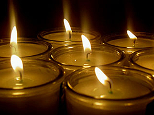Rav Yehoshua Falk Katz, author of Meiras Einayim, the Derisha and Perisha on the Tur, the Sema on Shulchan Aruch Choshen Mishpat (1614). As a youth, he learned under the Rema (to whom he was related) and the Maharshal. He later served as Rosh Yeshiva in Lemberg. He is the grandfather of the Pnei Yehoshua.
Rav Aharon Hagadol of Karlin (1736-1772). Student of the Maggid of Mezritch, founder of Chasidus in Belarus and the Karlin-Stolin dynasty. Rav Aharon left behind a son, Rav Asher of Stolin who was the father of Rav Aharon Karlin II (1808-1872)

 Rav Yitzchak of Drovitch (1758). He was the father of R’ Yechiel Michel, the Maggid of Zlotschov. In later years, Rav Yitzchak served as the official maggid or “mochiach” (admonisher) and dayan in the beis din of Brod at the time when Rav Yitzchak of Hamburg was serving as the town’s rav. Rav Yitzchak’s name is specifically attached to Drohobitch, a town that lies 40 miles south of Lelov and today is a major petroleum refining center.
Rav Yitzchak of Drovitch (1758). He was the father of R’ Yechiel Michel, the Maggid of Zlotschov. In later years, Rav Yitzchak served as the official maggid or “mochiach” (admonisher) and dayan in the beis din of Brod at the time when Rav Yitzchak of Hamburg was serving as the town’s rav. Rav Yitzchak’s name is specifically attached to Drohobitch, a town that lies 40 miles south of Lelov and today is a major petroleum refining center.
Recent comments